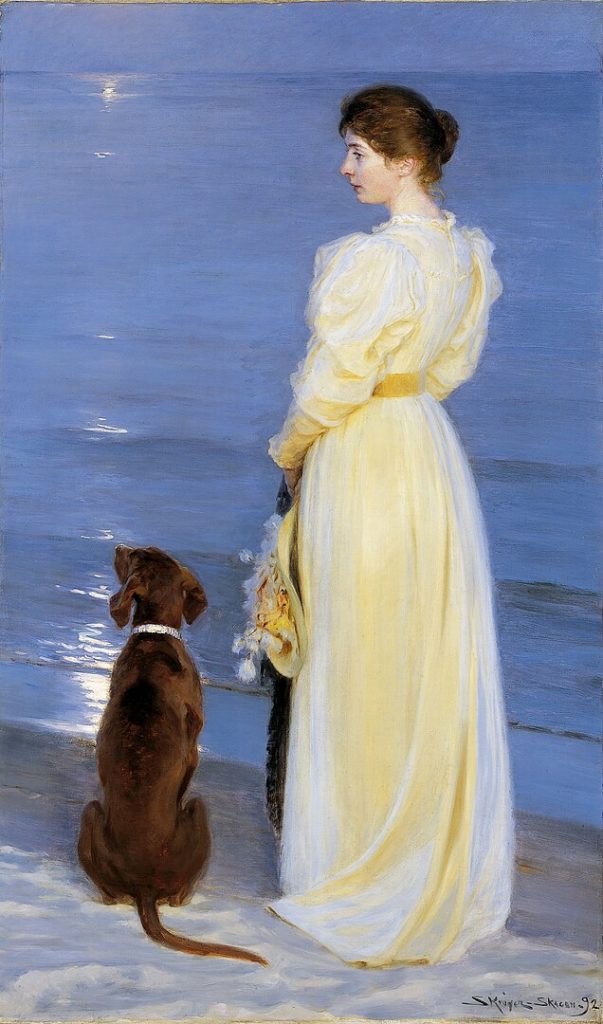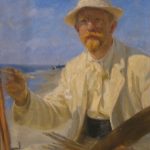
The light of Skagen, a remote town located at the northern tip of Denmark, has long captivated the hearts and imaginations of artists, photographers, and visitors alike. Renowned for its rare, luminous quality, this light became the hallmark of the Skagen painters, a group of Scandinavian artists who gathered in the area during the late 19th and early 20th centuries. They were drawn not only by the beauty of the Danish coast but also by this unique, almost mystical light that profoundly influenced their work. But what exactly made the light of Skagen so special, and how did it come to shape an entire artistic movement? This article delves into the natural and cultural phenomena surrounding Skagen’s light, exploring why it remains a celebrated inspiration to this day.
The Geographic Location of Skagen and Its Unique Environment
Skagen’s distinctive light can be attributed largely to its unique geographic location. Situated on a narrow peninsula where the North Sea and the Baltic Sea converge, Skagen enjoys an environment unlike anywhere else in Denmark. This position allows the area to receive light from multiple angles, amplifying its luminosity and creating striking contrasts throughout the day. Additionally, Skagen’s northern latitude means that it experiences prolonged daylight hours during summer, allowing artists to work with an extended window of natural light.
The landscape around Skagen plays a role in enhancing this light. Flat sandy beaches, sprawling dunes, and a mostly open horizon reflect sunlight in a way that heightens its intensity. The surrounding sea acts as a mirror, amplifying the glow and illuminating the area with a softened radiance. For artists, this offered endless opportunities to capture the subtleties of light and shadow, as well as the vibrant colors of nature, on canvas.
The Role of the Skagen Painters in Popularizing the Light
The Skagen painters were instrumental in bringing attention to Skagen’s unique light. This group of artists, primarily Scandinavian, settled in Skagen in the 1870s and continued to gather there over the next few decades. Artists like P.S. Krøyer, Anna Ancher, and Michael Ancher became known for their ability to depict the natural beauty of Skagen’s landscapes and the daily lives of its fishing community. They found endless inspiration in the way the light interacted with Skagen’s landscape, from the shimmering beaches to the golden sunsets.
These artists were influenced by the Impressionist movement, which emphasized capturing light and color in a naturalistic manner. The Skagen painters used these techniques to reflect Skagen’s unique atmosphere on canvas, depicting the rich palette of colors brought out by the light—from soft pastels to vivid blues and purples. Their works captured not just the scenes of Skagen but also the serene, almost ethereal quality of the area’s light. Through their paintings, the Skagen painters helped popularize this mystical light, drawing more artists, tourists, and eventually researchers to experience it firsthand.
How the Light of Skagen Changes Throughout the Year
The seasonal changes in Skagen’s light add another layer of fascination to the area’s already unique environment. During summer, Skagen experiences long days and short nights, with the sun lingering just below the horizon. This results in a phenomenon known as the “midnight sun,” where twilight extends deep into the night, casting a gentle, dreamlike glow over the landscape. This light allowed artists more time to work outdoors and offered a constantly shifting palette of colors to capture on canvas.
In winter, the light takes on a colder, more subdued quality as the days grow shorter. Yet even in this season, the light in Skagen retains its distinctive clarity. The lower angle of the sun creates longer shadows and enhances the contrasts in the landscape, providing a striking visual experience. For the Skagen painters, this winter light offered a stark, contemplative atmosphere that allowed for deeper explorations of color and form.
The Influence of the Atmosphere and Climate on Skagen’s Light
Skagen’s light is also shaped by its atmospheric conditions, which are influenced by the convergence of the North Sea and the Baltic Sea. The two bodies of water meet near Skagen, creating a unique blend of weather patterns. This maritime climate often leads to clear skies and crisp air, conditions that are ideal for light reflection and clarity. Additionally, the frequent, gentle winds in the area help keep the atmosphere free from pollutants, contributing to a cleaner, more intense light.
The coastal fog that sometimes rolls in also adds a mystical quality to Skagen’s light. The fog can soften the landscape, adding a sense of depth and mystery to scenes, which artists found fascinating to capture. This interaction of light, air, and water gives Skagen’s atmosphere a unique texture and quality, making it a truly dynamic environment for artistic exploration.
Skagen’s Light as a Source of Inspiration and Creative Exploration
The light of Skagen became more than just a physical phenomenon for the artists; it became a source of inspiration and a catalyst for creative exploration. Artists such as P.S. Krøyer were particularly moved by the light’s ability to bring out the beauty of ordinary moments and scenes. Krøyer’s famous painting, “Summer Evening on Skagen’s Southern Beach,” showcases the soft twilight glow and captures the serene atmosphere that has come to define Skagen’s allure.
For Anna Ancher, Skagen’s light allowed her to explore themes of domestic life, capturing indoor scenes with a unique warmth and clarity that conveyed the intimate nature of her subjects. This light enabled her to depict everyday moments with a poetic sense of realism, blending her technical skill with the emotive power of Skagen’s ambiance.
The Modern-Day Appeal of Skagen’s Light for Artists and Photographers
The appeal of Skagen’s light has persisted beyond the time of the Skagen painters, continuing to draw artists and photographers from around the world. With advances in photography, Skagen has become a popular destination for photographers looking to capture the same unique light that inspired the painters more than a century ago. The area’s open landscapes and varying light conditions offer endless opportunities for creative expression, allowing photographers to experiment with natural lighting in ways that few other locations can provide.
Modern painters also find inspiration in Skagen’s light, often studying the works of the original Skagen painters to understand their techniques and interpretations. Art schools and workshops in Denmark sometimes organize trips to Skagen, encouraging students to experience the light firsthand and learn how it has inspired generations of artists.
Scientific Studies on the Unique Properties of Skagen’s Light
Scientists have even taken an interest in Skagen’s light, conducting studies to better understand its unique properties. Researchers have examined factors like the angle of sunlight, atmospheric clarity, and the reflective properties of the area’s landscape. These studies aim to provide a scientific explanation for why Skagen’s light appears so different from light in other regions. While much of the light’s quality remains an aesthetic experience, these scientific explorations add another dimension to our understanding of Skagen’s allure.
Some researchers suggest that the angle of sunlight at Skagen, combined with the reflective surfaces of the sea and sand, plays a significant role in creating this unique luminosity. Others point to the area’s low levels of air pollution and frequent presence of clean, moist sea air, which may enhance the clarity and intensity of the light. Although no single factor fully explains the phenomenon, these scientific insights help deepen our appreciation for Skagen’s remarkable natural beauty.
Conclusion: The Enduring Magic of Skagen’s Light
The light of Skagen remains one of the most enchanting natural phenomena in the world, cherished by artists, photographers, and nature enthusiasts alike. This light, born of Skagen’s unique geography, climate, and atmospheric conditions, has inspired countless masterpieces and continues to be a subject of fascination. The Skagen painters were among the first to capture its beauty, but the allure of this light has endured, captivating new generations and preserving Skagen’s reputation as a place of artistic pilgrimage. Whether through art, photography, or simple observation, experiencing Skagen’s light is a journey into a world where nature and creativity intersect in the most magical way.
Key Takeaways
- Skagen’s light is unique due to its geographical location at the meeting of the North Sea and Baltic Sea, which enhances luminosity.
- The light’s distinct quality was popularized by the Skagen painters in the late 19th century, making it an artistic landmark.
- Seasonal variations in Skagen’s light, from the midnight sun in summer to the stark winter light, offer a dynamic experience for artists.
- Atmospheric clarity from clean sea air and reflective landscapes contribute to Skagen’s intense light.
- Skagen’s light continues to inspire modern artists and photographers, attracting them to explore its beauty and mystery.
FAQs
- What makes Skagen’s light unique?
Skagen’s light is enhanced by its geographic location, where the North Sea and Baltic Sea meet, creating a luminous and dynamic atmosphere. - Who were the Skagen painters?
The Skagen painters were a group of Scandinavian artists who gathered in Skagen in the late 19th century to capture the area’s unique light and landscape. - Why is Skagen a popular destination for artists?
The unique light, open landscapes, and historical significance of Skagen make it a renowned location for artists seeking inspiration. - How does the light in Skagen change with seasons?
In summer, Skagen experiences long daylight hours and a midnight sun effect, while winter offers a colder, more subdued light with stark contrasts. - Are there scientific reasons for Skagen’s distinctive light?
Studies suggest factors like the angle of sunlight, atmospheric clarity, and reflective surfaces contribute to the unique quality of Skagen’s light.




